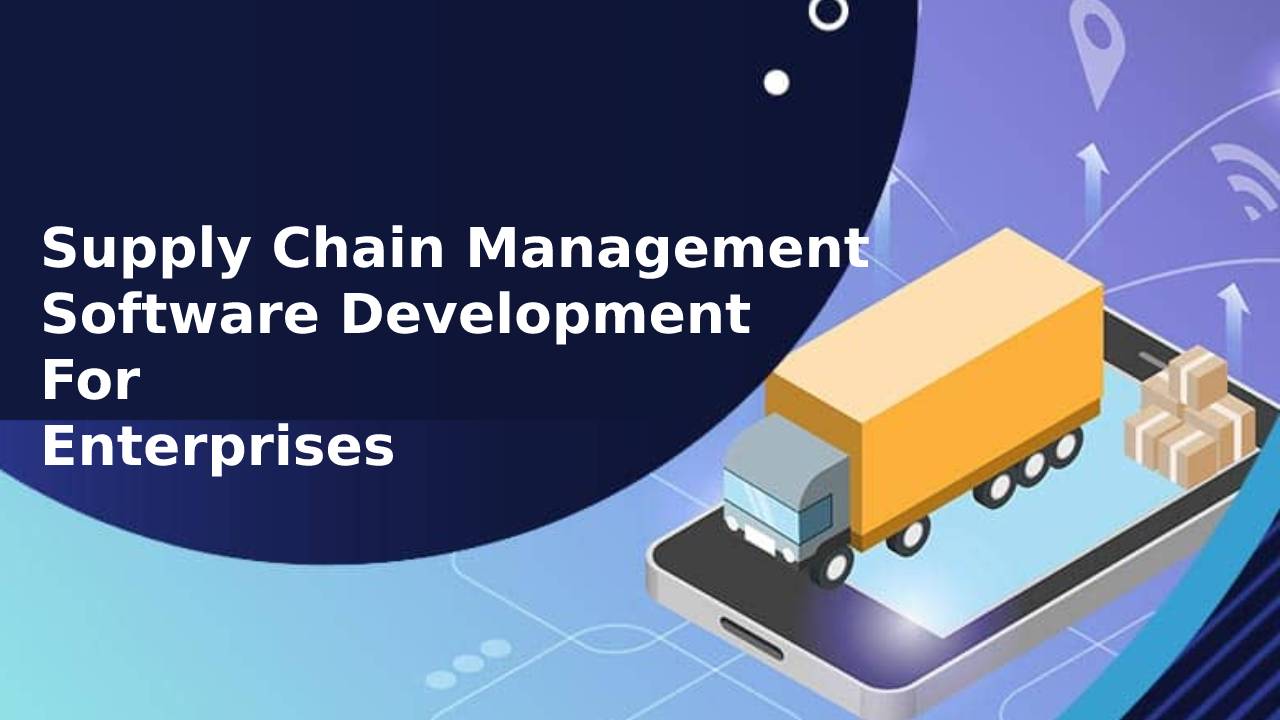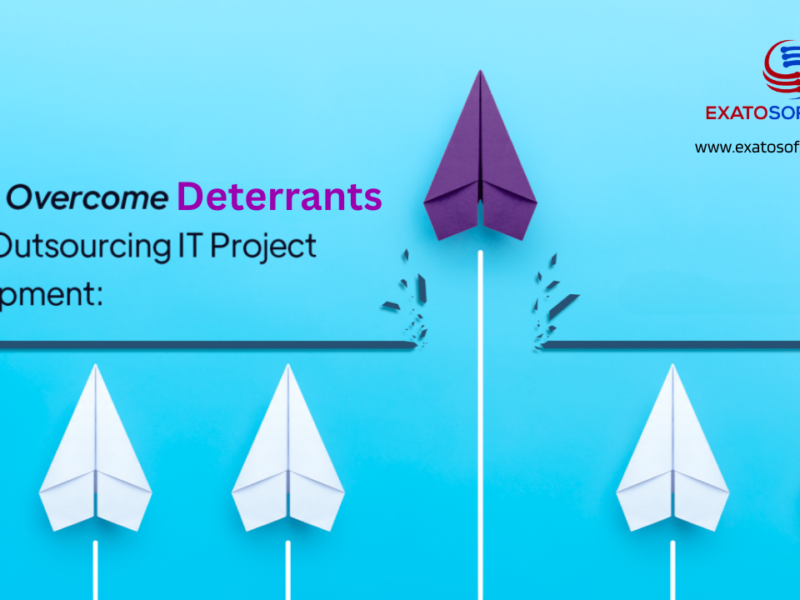Supply chain management software or SCM software was created to help enterprises satisfy consumer needs while saving as much time and money as possible. The strategic flow of goods from their point of origin through the manufacturer, warehouse, shop, and client, as well as the process of return are tracked to achieve this.
Customization and data collecting will be substantially more challenging for each organization that manages its supply chain because each will have its criteria and procedures. SCM software solutions help businesses run more efficiently, reduce costs associated with manufacturing delays, gather the information that can be used to enhance processes and forecast future outcomes, and establish great relationships with customers and suppliers.
It might be challenging to choose which supply chain management software will best meet the needs of your specific area of work and the goals you have established for your business because hundreds of options are accessible. With the help of this buyer’s guide, you can better understand features, market trends, to help you select the best supply chain software provider for your organization.
Supply Chain Software Development Objectives
Supply chain management is the act of organizing, supervising, and carrying out the distribution of a company’s products and services. It is a crucial part of every business.
The fundamental goals of supply chain management are to ensure effective inventory management, timely product and service delivery, efficient and cost-effective production, flexible manufacturing, and collaborative relationships between suppliers and customers.
● Cost-Effective and efficient Production:
This process guarantees that customers receive the products and services they have ordered on time, reducing lead times and raising customer satisfaction levels.
● Effective Inventory Management
Supply chain management emphasizes the value of cooperation among suppliers, manufacturers, distributors, and customers, which eventually leads to enhanced coordination and communication.
● Collaborative Relationships
The ultimate objective is to create flexible and responsive supply chain solutions that can alter quickly in response to shifts in demand, supply, or customer demands.
Must-Have Features of Supply Chain Management Software

Although the pricing, scale, and sector of software will vary from one provider to the next, the majority of supply chain management enterprises will focus on the following functional areas:
● Inventory optimization
It ensures the necessary goods are kept in the appropriate locations and sends notifications to the right parties to any potential shortages in the distribution center, warehouse, or retail. The distribution network is continuously monitored, which keeps administrative costs to a minimum and guarantees uninterrupted delivery. When this happens, the inventory levels can quickly adapt to client demands, seasonal adjustments, promotional activities, and replenishment schedules.
● Warehouse management
These features enable tracking goods and supplies inside a small space, such as a warehouse or distribution center. The products can be quickly located at any subsequent procedure stage, such as stock selection, receiving, shelving and shipping. The items can then be transferred by warehouse staff to another storage location, or, if necessary, a customer directly. It is crucial for companies that run extensive warehouse networks in several locations to have this capacity, which is occasionally available independently as its dedicated warehouse management system.
● Demand forecasting
Businesses can use SCM systems to help them predict supply and demand changes using algorithms based on supply levels, sales history, and consumer characteristics. Businesses can avoid overstocking or understocking, which can result in waste, revenue loss, and going further can lose clientele as well.
● Procurement
Enterprises can automate and handle vendor purchase orders for quicker account settlement. These solutions can be synchronized with financial systems to approve and list expenses and establish an audit trail for subsequent cycles.
● Order returns and fulfillment
Supply chain centers can streamline the order fulfillment process by using tools which help with everything from the original enquiry to creating bids and invoices, shipping, and final delivery. Numerous order configurations and types, including build-to-order, engineer-to-order, build-to-order, digital copy, assemble-to-order and make-to-stock, can be managed via these systems’ fulfillment choices. These systems contain additional features besides processing refunds and tracking payments via revenue recognition.
● Supplier management
To optimize value for both parties, these features, also known as supplier relationship management (SRM), ensure that sourcing businesses have visibility into the assets and data offered by their suppliers. The division of suppliers, the measurement of risk, the tracking of compliances and performance, and possibly other features are also possible components of this feature.
Types of supply chain management software
● Lean Inventory Management Tools
Lean production is based on an idea that is simple to understand. A business will only generate the products it needs at the moment. Forecasts of future client demand levels establish these requirements, and the more accurate those predictions are, the more effectively a business can run. A lean inventory system would need to connect with sales systems to match data on sold-through items with those reflecting available inventory to be fully effective.
● Supplier Management
Thanks to the tools for supplier management, a firm may quickly assess its relationship with a particular supplier and how that supplier has affected its supply chain. Ensuring suppliers adhere to laws may amount to $5 million if the processes are manual and disjointed throughout the operations team. With vendor management software, businesses can assess and manage all levels of partners based on key performance metrics. This software creates a digital profile of each supplier for the business to utilize.
● Order Processing Tools
Companies can capture data for rapid use using the tools for processing orders. These tools allow for automating a sizable percentage of the time-consuming manual labor often involved in order processing. These solutions considerably reduce the time and labor required to manage purchase orders (PO) and invoices. Furthermore, the supply chain finance teams may quickly run reports on issued POs and outstanding invoices using a straightforward order processing tool. They better understand the operational workflow, which is crucial for reporting to relevant stakeholders.
● Demand Forecasting
Forecasting future demand is one of the most useful tasks that can be completed with the help of the current data and inventory management systems. These estimates allow a business to be proactive rather than reactive and prevent them from missing out on potential sales because they were unprepared. Tools for demand forecasting can help reduce overhead costs and boost overall earnings. Integrating a demand forecasting tool with a vendor management system increases the instrument’s potential by ensuring that any product forecast data is paired with information on the suppliers who will give the best turnaround times, price, and quality. Doing this ensures product forecast data can be used to make informed purchases.
● Logistics Tools
By identifying problems early on, supply management software’s constant communication and extensive tracking capabilities assist companies in averting delays and other logistical problems. This significantly reduces the possibility that ineffective communication routes may cause delays, keeping things going more quickly. To improve the efficiency of the outbound supply chain, a lot of money has been put into logistics software during the past few years. These logistics solutions assist in tracking a company’s transportation-related carbon footprint and support sustainability goals.
How to Start Supply Chain Software Development?
A supply chain is made up of a well-organized network. Therefore, a consistent structure that enables functionality and visibility throughout the product delivery process is required for any SCM system. As a result, an SCM system often includes features like inventory management, warehouse management, supplier relationship management, demand forecasting, logistics planning, processing of purchase orders, etc.
Most SCM systems also include bookkeeping functions, enabling the business to effectively manage its ledger and maximize its financial performance.
Software-as-a-Service (SaaS), a term for cloud-based SCM solutions, has become more popular recently. Thanks to cloud supply chain management, which provides close monitoring and enough visibility at each touchpoint, businesses can now track a project’s whole lifecycle. Inadequacies in traditional SCM systems, which lacked the 360-degree management made available by cloud technology, prompted the supply chain application development. In general, scalability and operational effectiveness are higher for cloud-based SCM solutions.
How to Secure Supply Chain Software Implementation?
● Quick Response to Vulnerability
Supply chain assaults on legacy software are still a problem, and businesses have a decreasing window after disclosing a vulnerability to address exploitation. If vulnerabilities are not immediately patched, businesses risk having their apps compromised by enemies. However, our study found that only 17% of businesses get informed of newly found open-source software issues a day after they are made public. And within one to seven days, one-third of people learn the news.
The better off you will be, the quicker you respond to potential security holes.
● Maintain Supply Chain Visibility
Finding a weakness is only half the fight; the other half uses it to your advantage. The next action software engineers do after discovering a code flaw is to repair all concerned programs. This can only be done with thorough visibility across the software supply chain.
The good news is that there are tools that can scan programs, spot broken parts, and reduce the labour required to fix them.
● Block-list Elements
For protection against assaults, communication is a must. Developers and community members rapidly remove potentially harmful components from the production process when they are found. The opportunity exists for teams to flag problematic components, implement a system to track them, and forbid them from ever reentering the enterprise application development lifecycle.
● Monitor and Update Code
Once an app hits end-of-life (EOL) status or when support is ceased, preserving the Code in it is impossible. This is a concise way to put it. Because of this, it is crucial to ensure the Code is still actively used and kept up-to-date by a community. This demands attention.
Vulnerabilities created by leaving behind outdated, unsupported Code may impact your supply chain. Switching to a replacement code base or project when you learn that a project or code base will be abandoned or eliminate functionality is crucial.
Supply Chain Management Software Development Cost
The cost of Logistic Software Development is significantly influenced by the level of functionality included in the program. You should choose a comprehensive enterprise resource planning (ERP) system with a strong supply chain management solutions module if you are in charge of a large company with numerous divisions.
The overall cost of a fully functional program will be much greater. Any SCM software can be developed for a reasonable price, and a person can quickly produce one for themselves. If one of your business objectives is to locate a solution that would automate one of your processes, you have come to the correct place.
Conclusion
Utilizing the best supply chain management software in the most effective way possible enables the usage of information, processes, and people within a single welcoming environment. If your supply chain visibility is consolidated from start to finish, you can efficiently plan your performance, track your development, and respond to problems in real time. Therefore, if you haven’t already, this is the right time to integrate this software into your company’s operations.
FAQs
Q. What steps comprise the software development supply chain management process?
A. The movement of goods and information associated with each stage of a supply chain is managed by software created for supply chain management, or SCM. Using an SCM solution, you can manage your inventory, track your suppliers, and improve delivery times.
Q. In what specific ways does SCM improve business performance?
A. Companies with efficient supply chain management can optimize product flow through precise demand and sales forecasts. They can also strengthen inventory management to stop the bullwhip effect and prevent underproduction.
Q. What are the objectives of supply chain management in a business environment?
A. Maintaining a company’s viability and guiding it to success is the basic goal of SCM. Increasing productivity and quality, lowering expenses to the barest minimum, increasing delivery and distribution efficiency, and providing the best customer experience are all additional objectives of supply chain management (SCM).



